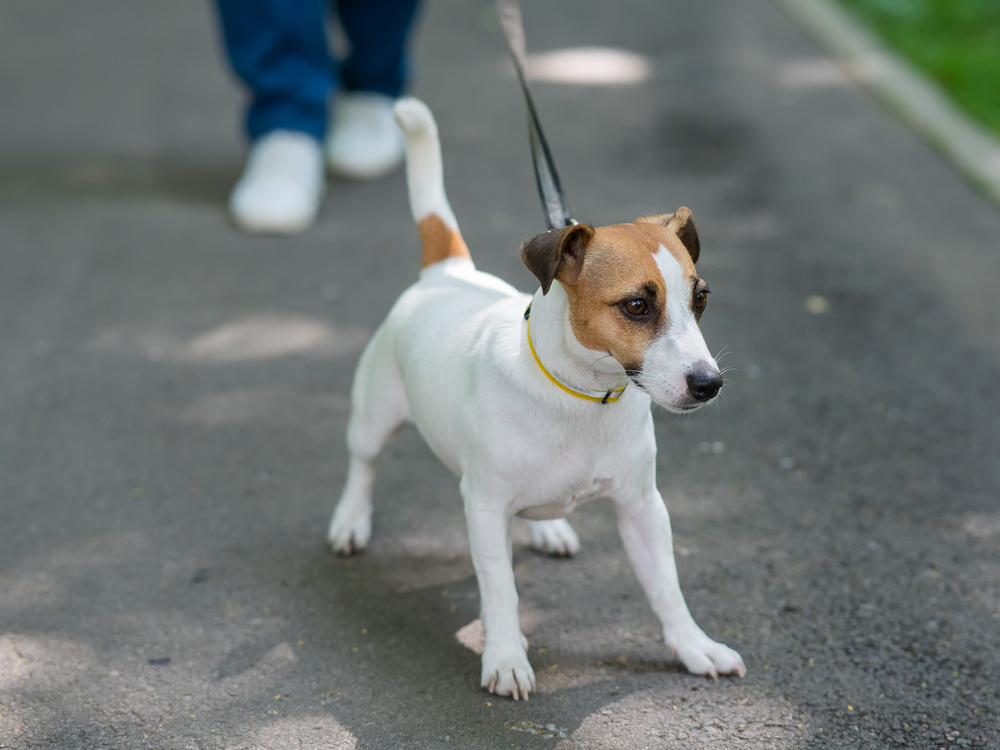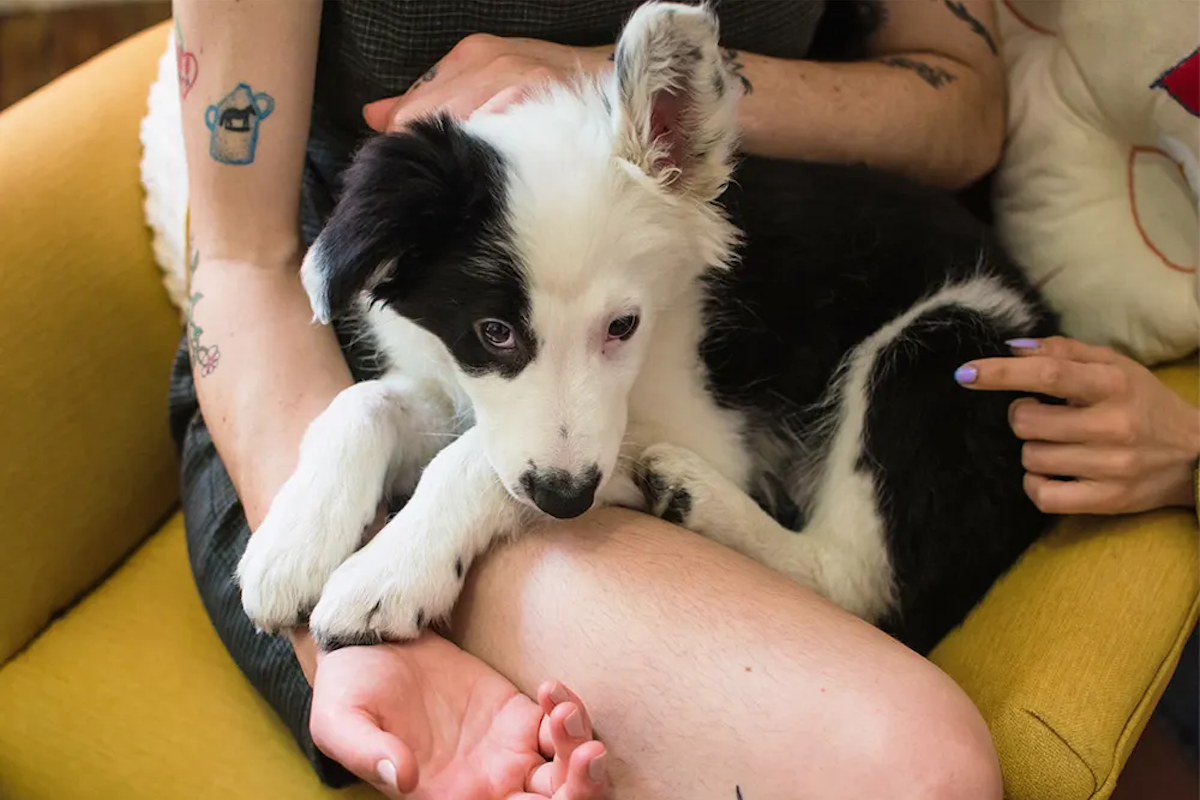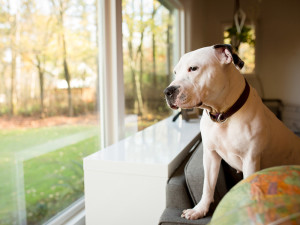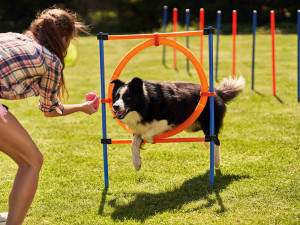What Is “Trigger Stacking”?
Keep your dog comfortable and safe with these tips for how to avoid this issue.
If there is one thing pet parents know, it’s that every dog is unique — and that can also apply to what triggers them. Yes, that word may seem like it comes up a lot these days, but it is an important and relevant one. And it applies to dogs, too.
In this context, triggers are situations or experiences that stimulate a dog’s nervous system, causing stress that can lead to reactive behaviors like barking, lunging, or attempting to escape. Common triggers include other dogs, loud noises, crowded spaces, or certain vehicles or animals.
Save on the litter with color-changing tech that helps you better care for your cat.
“A trigger is any sort of stimulus that is considered a threat, whether it be real or perceived by a dog,” sas Frankie Jackson, a veterinary nurse, animal behavior consultant, and owner of Canine Counselingopens in new tab in Smyrna, Georgia. “It can be an unexpected noise, it can be seeing another dog from across the street, or a thunderstorm — anything that is going to kick in a parasympathetic response from the dog — that fight, flight, freeze response”
It’s never fun to see your pup stressed out. But what if those triggers start to pile up? Experts say “trigger stacking” — the accumulation of multiple stressful or stimulating events in a short period of time — can quickly overwhelm a dog’s ability to cope and lead to a more intense or reactive response. And dogs are experiencing it more often, Jackson says. Although COVID lockdown was five years ago, dogs who went through the pandemic with us may have developed some new triggers they can’t easily shake.
“I work with a lot of dogs with reactivity and anxiety, because those conditions are so prevalent right now — especially post-pandemic,” she says. “With our lives becoming a lot smaller, the dogs’ lives are becoming a lot smaller, too. And living closer together than we have before can contribute to trigger stacking.”
Here’s what you need to know about trigger stacking, and how to avoid it.
What is “trigger stacking”?
Trigger stacking happens when a dog goes through one stressful event, and before they’ve had a chance to fully calm down, another stressful thing happens, Jackson says. Each experience piles on top of the last, causing stress hormones like adrenaline and cortisol to build up. This can lead to an outsized reaction, even to something that might normally seem minor.
Jackson says that what we see in those situations is that the dog is already highly sensitized to more triggers after the first one. That means that they are sensitive to triggers and they are more likely to notice them.
“This is an evolutionary response — we [humans] have it, too,” she says. “If we’re scared by something, for anywhere from 20 minutes to an hour afterwards, we are then primed to look for another threat. We become much more vigilant, and smaller triggers might even appear more frightening.”
What are signs your dog is experiencing trigger stacking?
One of the biggest signs your dog is triggered and may be prone to trigger stacking is hypervigilance, Jackson says. That means they may be constantly scanning their environment — eyes darting around, ears perked up, and overly alert. They may also stare off into the distance, fixate on sounds or movement, and seem generally on edge.
“If a pup is no longer responding to cues, even simple ones like their name, that's usually one of the first signals that they’re not paying attention because they're too busy looking for safety, or looking for more threats,” Jackson says. “They’re busy keeping themselves safe.”
Big signs of stress are obvious, Jackson says: panting, shaking, and whining or barking. But some signs are more subtle, especially if your dog has experienced a trigger and is not quite dysregulated yet but is trying to calm themselves down. That includes things like sniffing the ground or doing a full-body shake (like they’re drying off after a bath). Other signs of stress include lip-licking and out-of-context yawns. These behaviors suggest your dog is trying to regulate and feel better, Jackson says — and a good sign that they’re attempting to self-soothe.
How can you avoid trigger stacking?
Jackson says a lot of managing trigger stacking comes down to us and how we scan our environments to set our dogs up for success. If you know your dog gets anxious around other dogs, for example, and there’s thunder in the distance (another trigger), that’s probably not the best time for a walk in the neighborhood.
“It’s about us recognizing what triggers the dog, in what situations the dog gets triggered and how the dog is already feeling, so that we can avoid adding to that,” she says.
Of course, we can’t always avoid triggering situations. Let’s say you’re out for a walk, and your dog hears a firework or another upsetting stimulus. How do you calm them down before making your way home to avoid trigger stacking? Jackson says there are a number of methods that work on the go.
“The best way to do this, especially on the fly, is to get them doing something that is a normal self-soothing behavior for a dog,” she says. “Regulating behaviors for dogs often comes down to three things: sniffing, chewing, and licking.”
What tools can you have on hand to help prevent this?
The easiest self-soothing behavior for a dog to do on a walk is sniffing, she notes. Scatter treats on the ground to get them using their nose, and get their eyes off the horizon where they are looking for more threats. Distraction can be key.
“We are helping them decompress in those moments, so that they are better prepared if there is going to be another trigger,” she says. “It’s about doing both: It's half avoidance, it’s half treatment.”
If you’re at home, there are many more options for calming your pup. Give them a treat-filled Kong toy, or put some treats on the ground. Dim the lights, and put on some white noise or calming music, Jackson suggests.
“It may sound silly, but creating that kind of spa environment is really useful for them, just as much as it is for us,” she says. “Helping them decompress from early triggers brings that nervous system back down to a good baseline, so that any further triggers or stimuli aren’t going to contribute to that stacking. They’re just going to [have] a new experience that they’re able to cope with because the nervous system is reset.”









